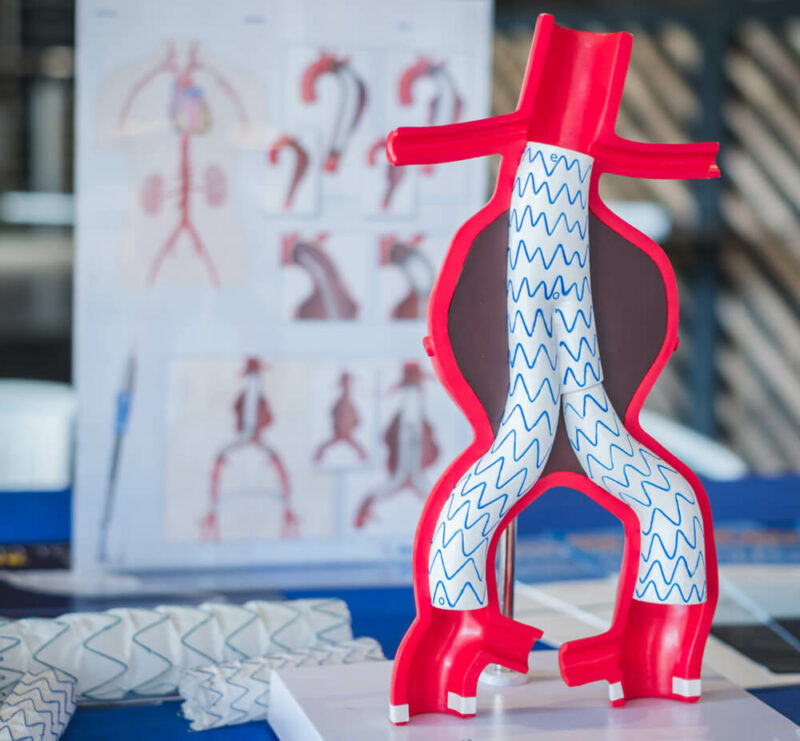PAD is a chronic disease in which plaque builds up in the arteries to the legs. This buildup typically occurs gradually. If allowed to progress, blood flow in that artery can become limited or blocked altogether.
PAD is relatively common, affecting more than 10 million people in the U.S. It is more common in people who are 65 or older but can occur at nearly any age. Smoking; high blood pressure; high cholesterol or triglycerides; diabetes; kidney failure; and obesity increase your risk for PAD.
Symptoms
FATIGUE OR CRAMPING OF MUSCLES WHILE WALKING
Fatigue or cramping of your muscles (claudication) in the calf, thigh, hip, or buttock may signal you have PADS. Typically the discomfort is felt after walking a certain distance and goes away with rest.
PAIN IN TOES OR FEET WHILE RESTING
If you have pain in your toes or feet while resting, you may have an advancing case of PAD.
OPEN WOUND ON TOES OR FEET
An open wound or ulcer on your toes or feet, often at a pressure point on the foot, can signal a serious case of PAD. An ulcer can progress to gangrene. These symptoms require immediate medical attention.
Causes
The causes of PAD include smoking, high cholesterol or high triglycerides, high blood pressure, diabetes, kidney failure, and obesity. Genetic factors also play a role, but are not well understood.
Diagnosis
SEE A VASCULAR SURGEON
You will be asked questions about symptoms and medical history, including questions about family members. The vascular surgeon will also perform a physical exam.
TESTS MAY BE RECOMMENDED
- An initial diagnostic test for PAD is the ankle brachial index (ABI). The test involves taking a blood pressure reading at the ankle and comparing it to that in the arm.
- Typically an angiogram is done to determine where the in the arteries plaque has built up to assess treatment options. This can be done using a CT or MRI, or possibly by doing a catheter-directed angiogram, which involves placing a thin tube into the artery and injecting dye into the arteries to see where the blockages are located.
Treatments
PAD is usually treated by aggressively managing the risk factors with lifestyle changes and medication. This includes quitting smoking, controlling blood pressure and cholesterol, controlling diabetes, and losing weight. In addition, an exercise program, if followed faithfully, can significantly improve the symptoms of PAD in many cases.
If PAD is causing serious symptoms, further treatments such as balloon angioplasty, stent placement, or surgical bypass can be very effective in improving the blood flow to the affected leg.
Staying Healthy
- Avoid tobacco use. If you smoke, ask your vascular surgeon to help you find a smoking cessation program that will work for you.
- Exercise regularly.
- Take prescribed medications as recommended to control high blood pressure, high cholesterol or triglycerides, diabetes, and kidney failure.
- Lose weight to decrease the amount of work your muscles need to do when you walk.
- Eat a balanced, low-sodium, low-fat diet.
